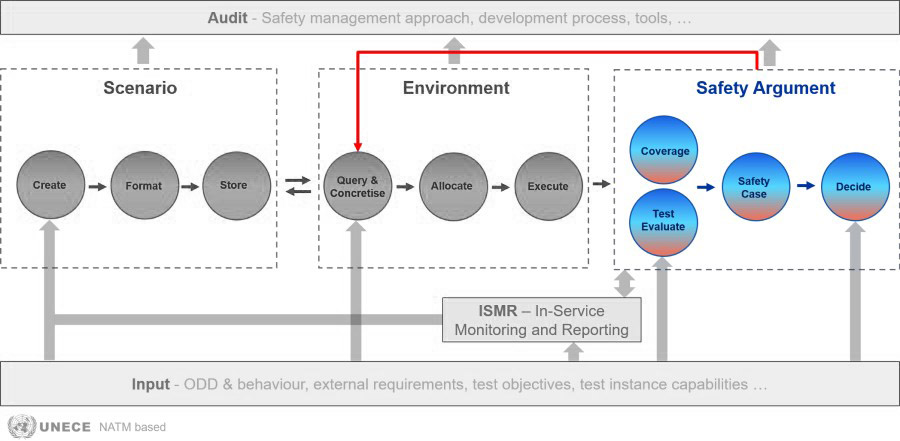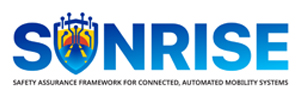Safety Argument

The Safety Argument component evaluates test results to assess the system’s safety through four interconnected stages: coverage analysis, test evaluation, safety case, and decision-making.
- Coverage
This stage examines test coverage from multiple perspectives, including parameter ranges in logical scenarios and Operational Design Domain (ODD) features. Iterative feedback loops identify conditions where the system fails pass/fail criteria, enabling new concrete scenarios to be generated within the parameter space. ODD coverage is particularly critical, ensuring the system’s operational boundaries are thoroughly tested using diverse scenarios. - Test Evaluate
Individual test executions are assessed to determine whether the system meets safety requirements, such as maintaining speed limits or avoiding collisions. Results from both test evaluation and coverage analysis feed into iterative refinements of scenarios until coverage thresholds are achieved. - Safety Case
The Safety Case block supports manufacturers in demonstrating that an Automated Driving System (ADS) meets legal safety requirements by compiling structured evidence, including test results, safety arguments, and risk estimates. It addresses different types of regulatory requirements and emphasises the validation of methods, tools, and data used, forming a transparent foundation for regulatory assessment and deployment readiness.
- Decide
Once sufficient coverage is reached, combined results from the previous stages are synthesised to produce the overall safety assurance outcome for the system.
The Safety Argument component ensures systematic evaluation, iterative refinement, and comprehensive safety assurance of the tested system.
